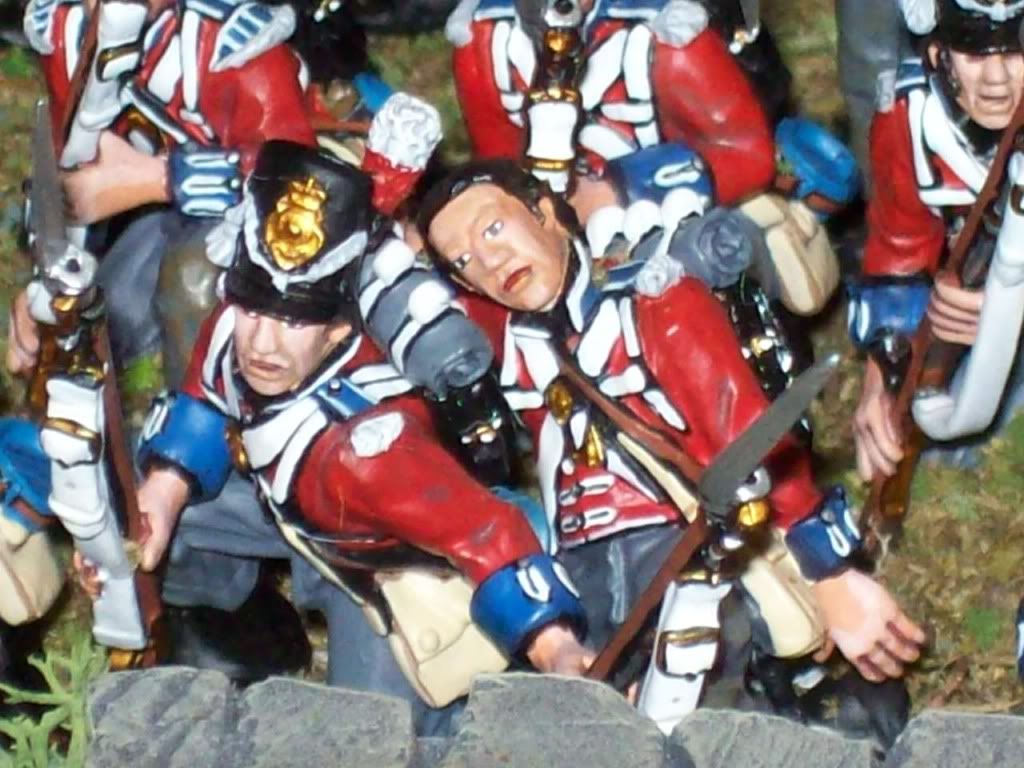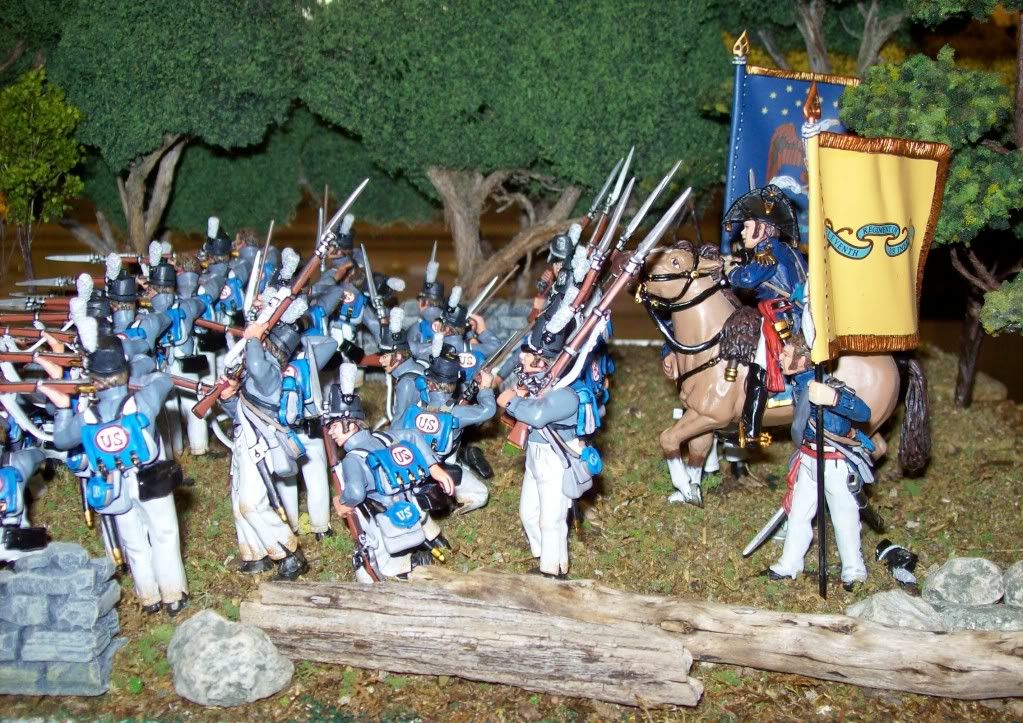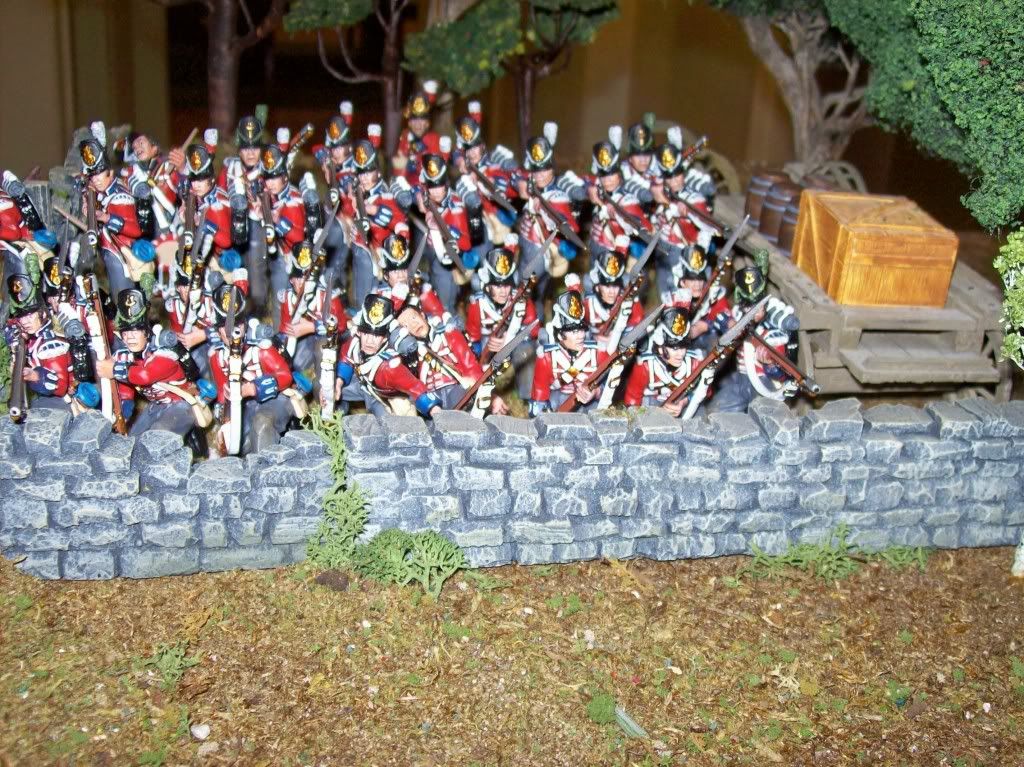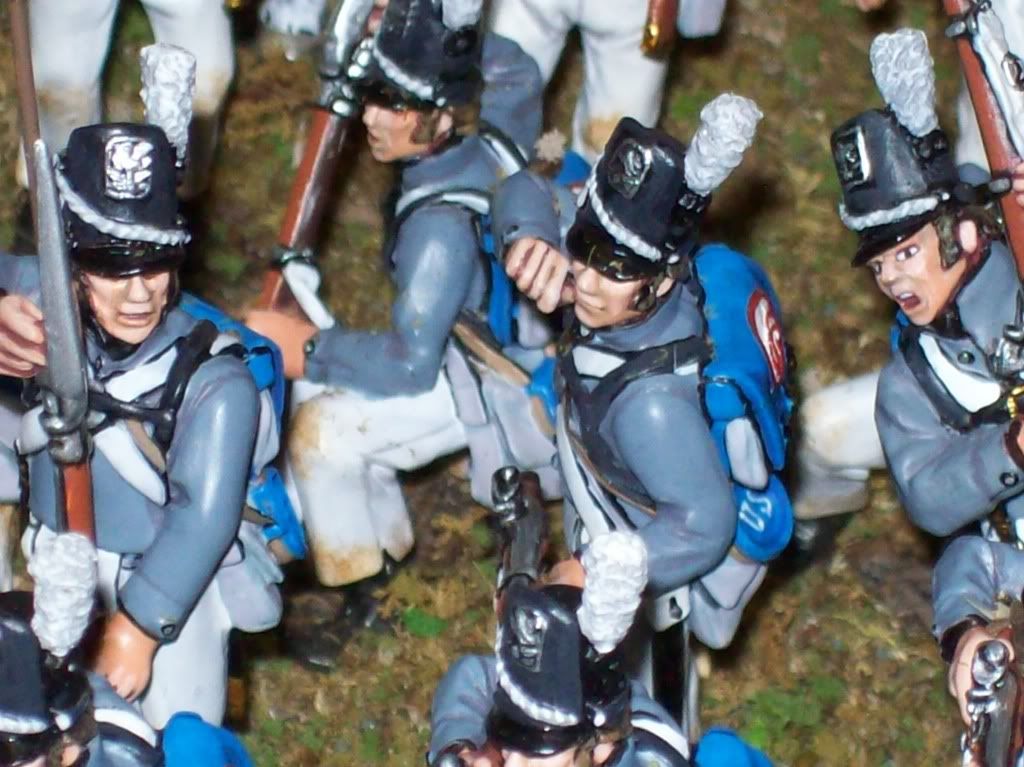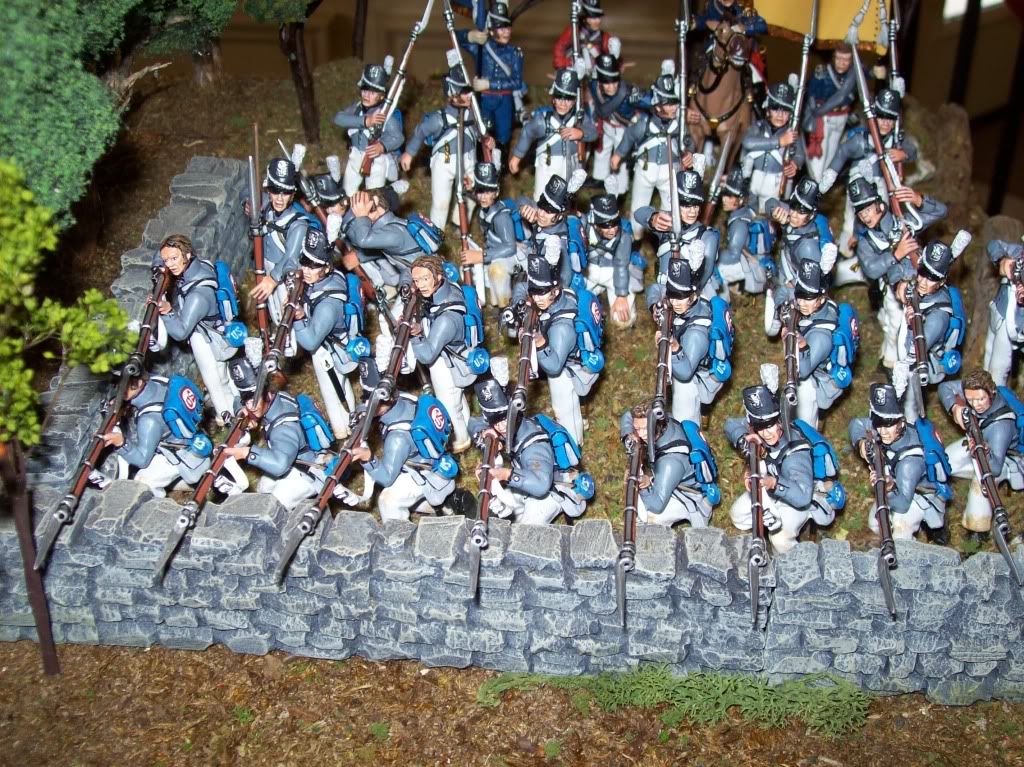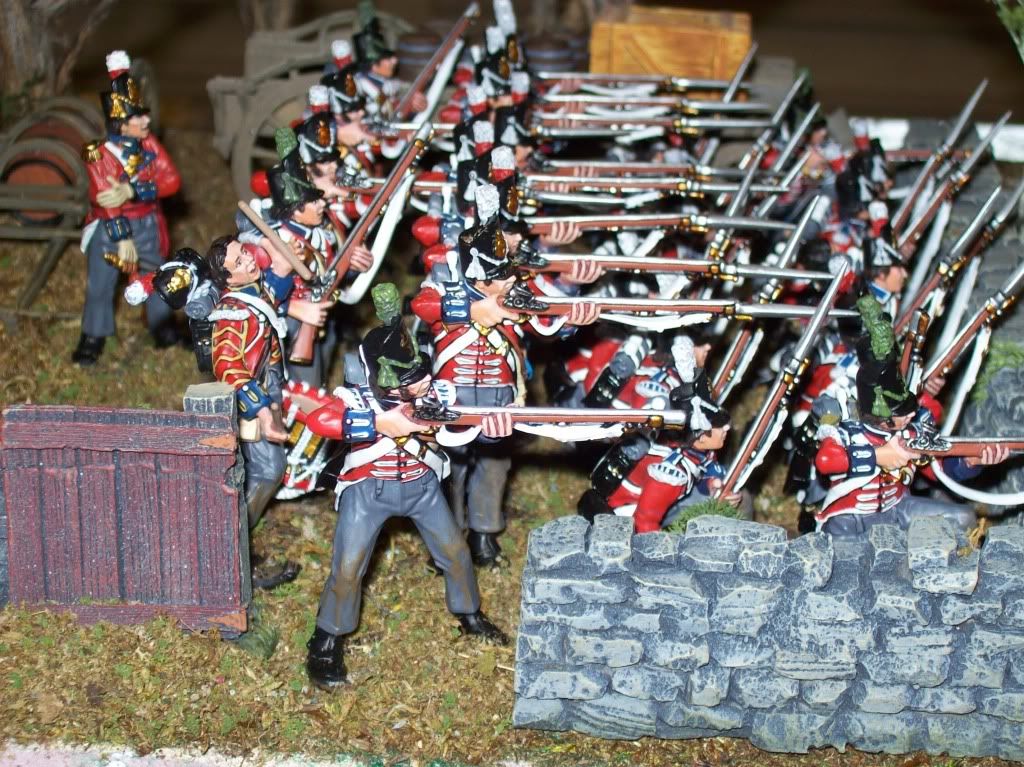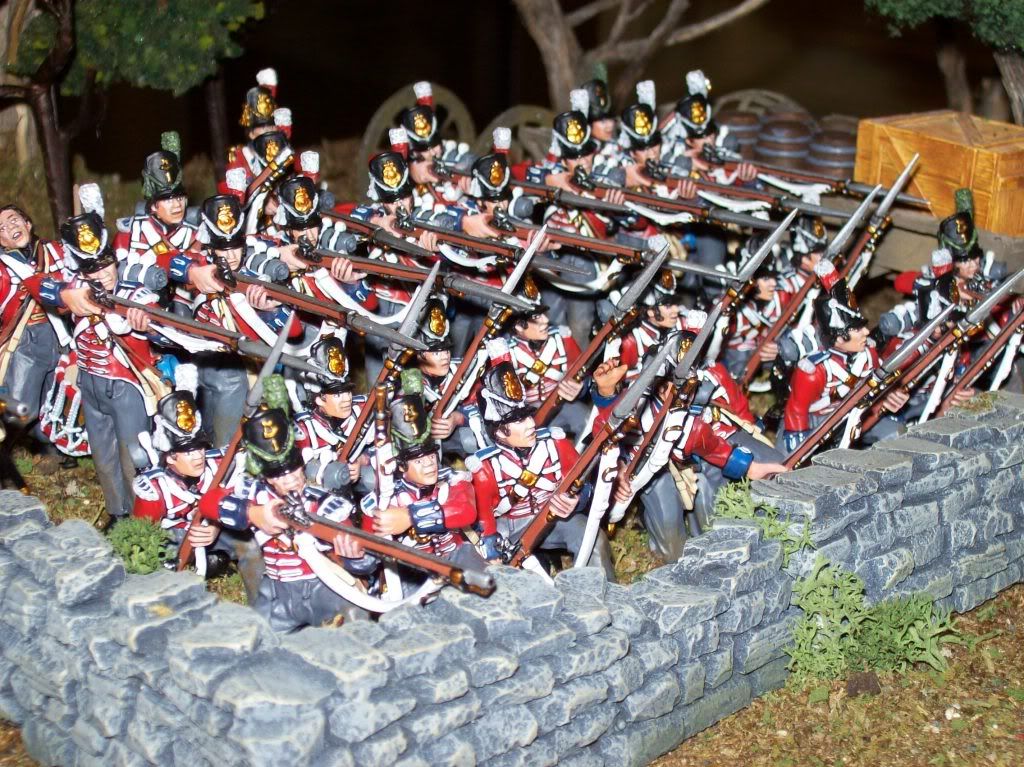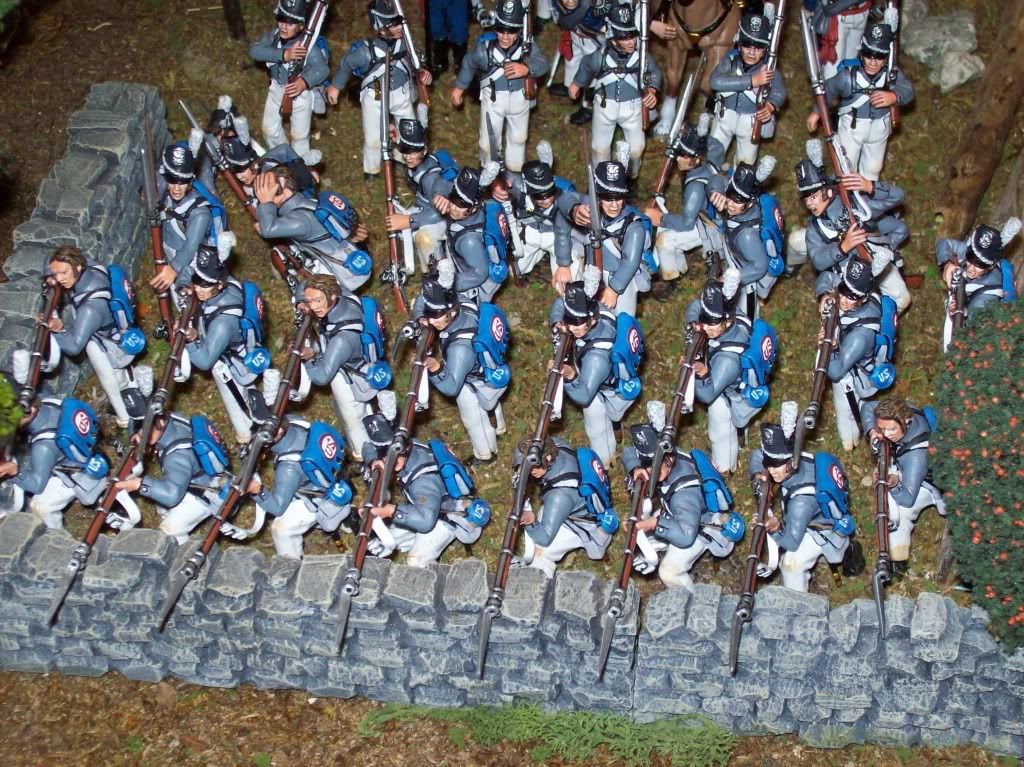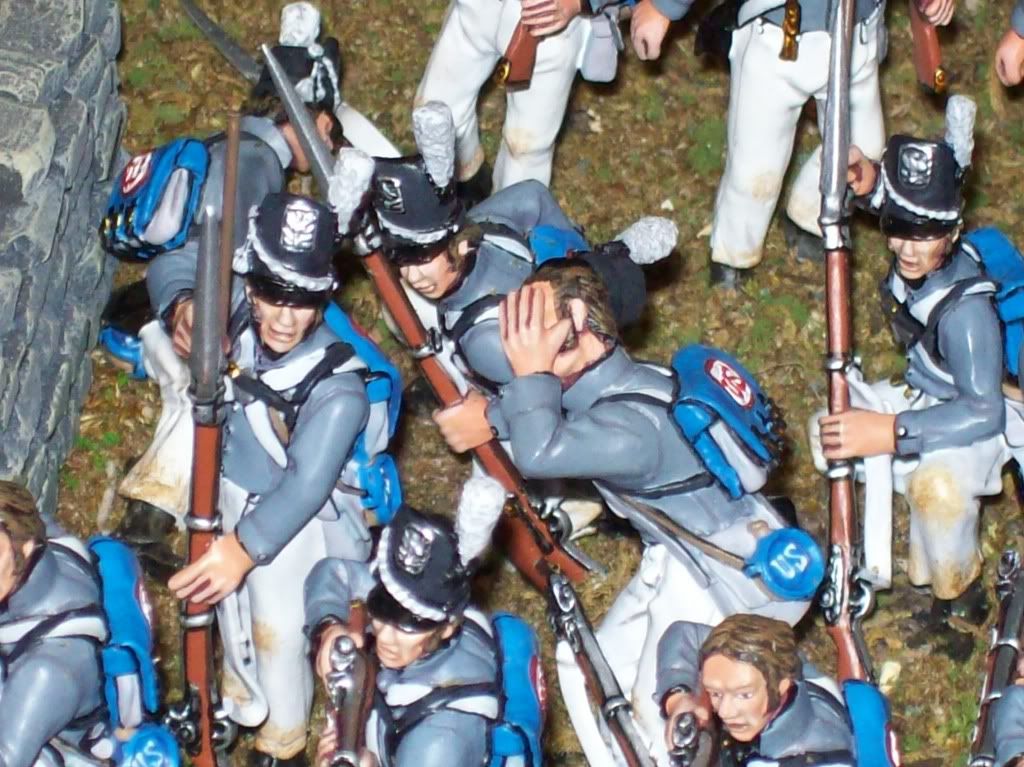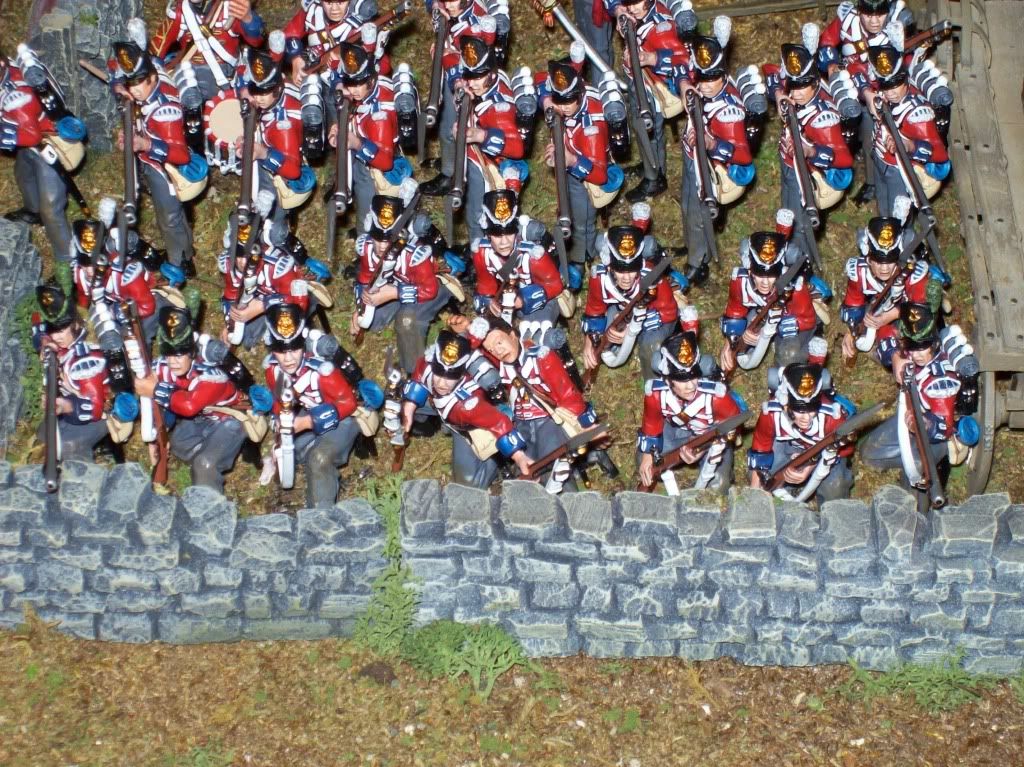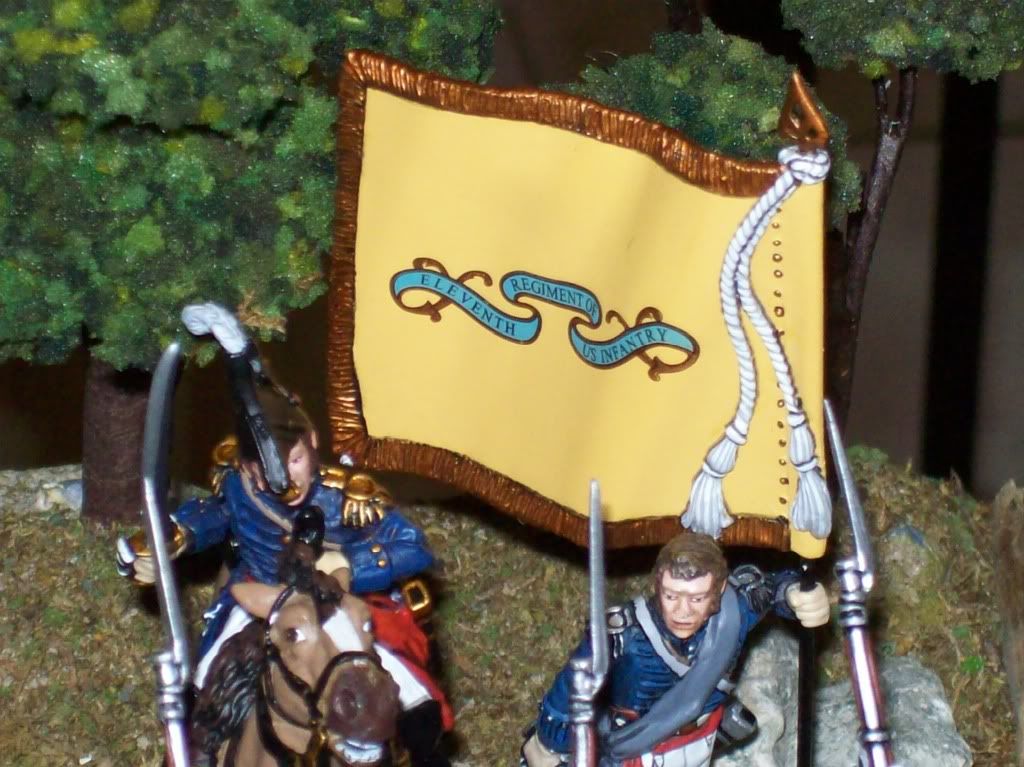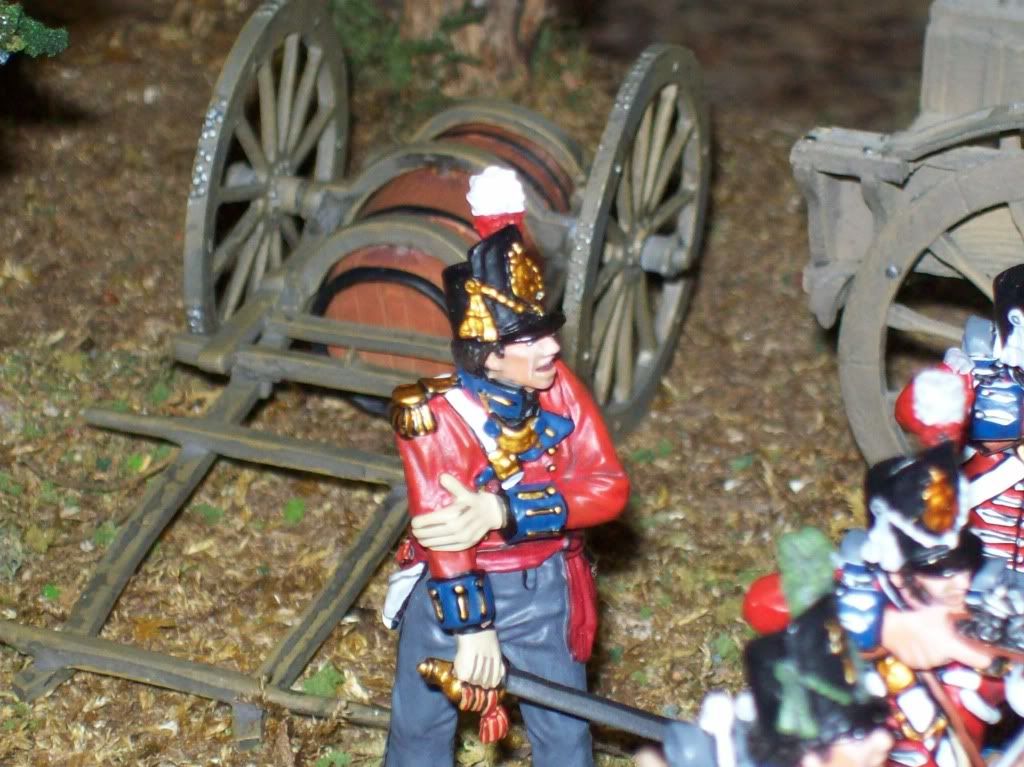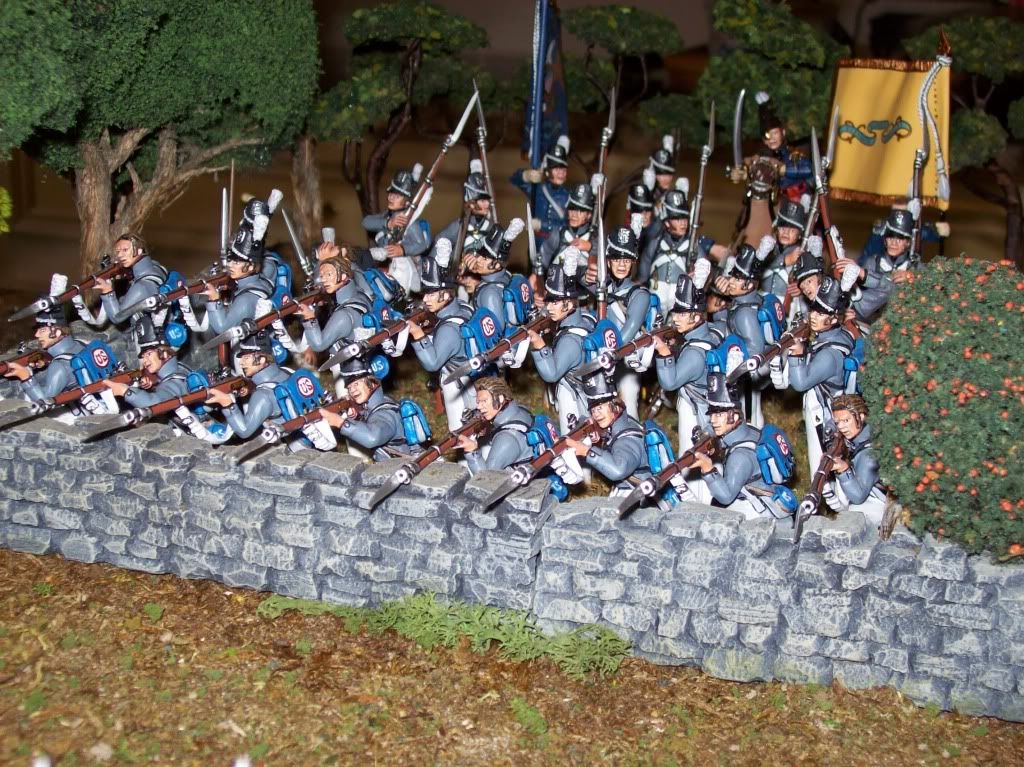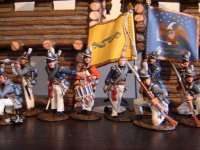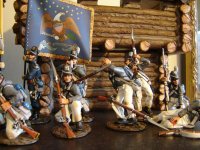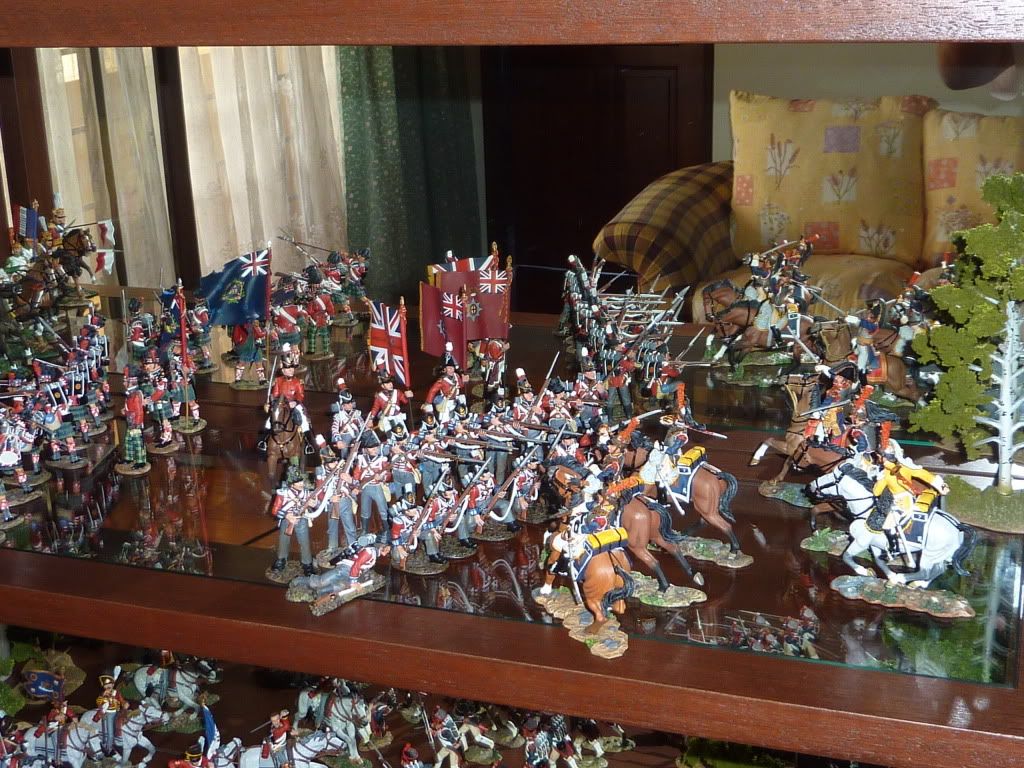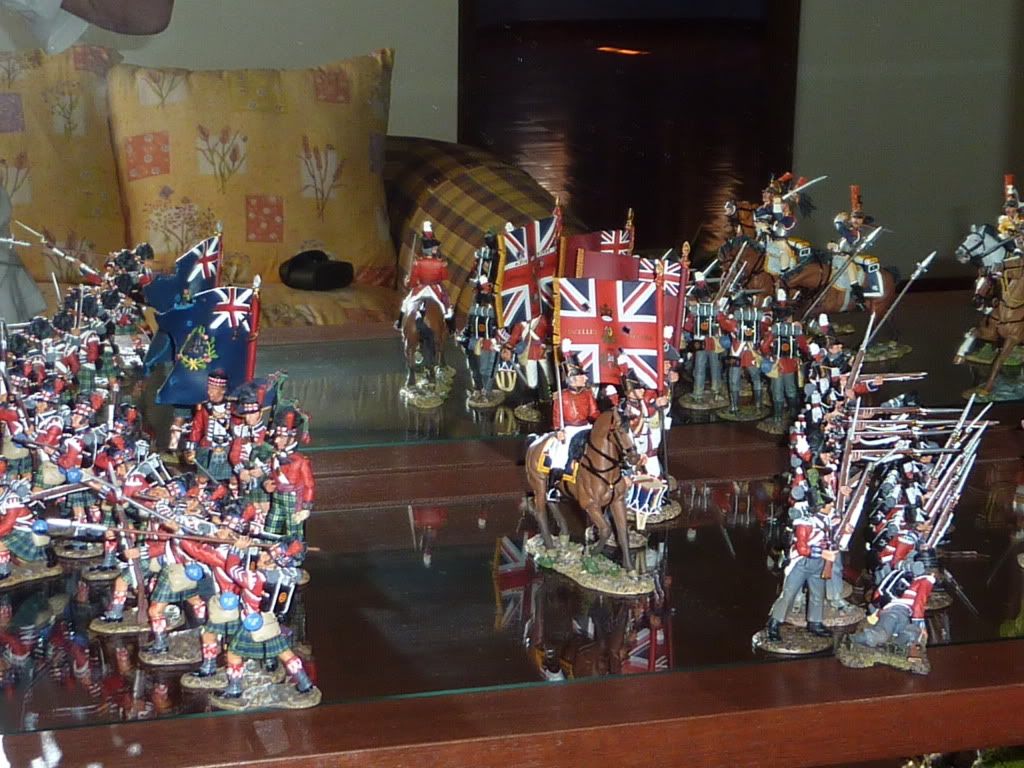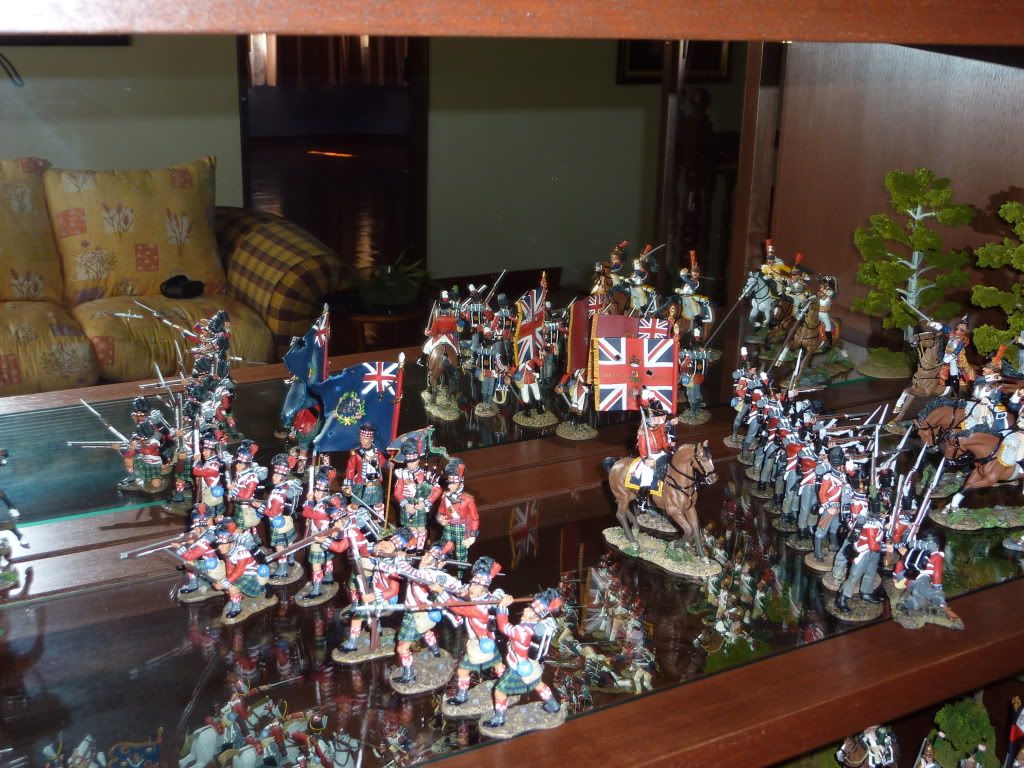mikemiller1955
Lieutenant General
- Joined
- Aug 3, 2008
- Messages
- 17,614
"Those are Regulars, by God!"...........Major General Phineas Riall
The reported utterance of this phrase...was by an astonished Major General Phineas Riall.
Spoken as he realized his major tactical blunder, by assuming the American soldiers he now exchanged fire with (dressed in the drab "gray" coats), were instead those of the undisciplined and untrained levies, believing they would break and run after exchanging volleys with the disciplined British armies, they didn't.
Raill was astonished to find the new American army, led by Brigadier General Winfield Scott, adhering strongly to the rules of European-style warfare and not panicking and fleeing as before .
The armies are separated by only 100 meters and firing volleys into each other, but Scott's men did not yield.
Their devastating fire cost the British many officers, causing a confusion of command among in forward lines.
The Battle of Chippawa (sometimes incorrectly spelled Chippewa) was a victory for the United States Army in the War of 1812, during an invasion of Upper Canada along the Niagara River on July 5, 1814.
It is generally considered that Major General Phineas Riall, although misled as to the strength of the American forces and their quality, advanced overconfidently, and his mistaken tactics led to the heavy British casualties.
Some believe that the Corps of Cadets of the United States Military Academy at West Point wear the gray parade uniforms adopted in commemoration of Scott’s troops at Chippawa.
In early 1814, it was clear that Napoleon would soon be defeated in Europe, and seasoned British veteran soldiers from the Peninsular War would be redeployed to Canada.
The United States Secretary of War, John Armstrong, was eager to win a victory in Canada before British reinforcements arrived there.
Major General Jacob Brown was ordered to form the Left Division of the Army of the North.
Armstrong intended him to mount an attack on Kingston, the main British base on Lake Ontario, with a diversion by militia across the Niagara River to distract the British.
He had however drawn up alternate orders for a major attack across the Niagara, possibly as a contingency plan, but probably to mislead the British through deliberate leaks.
Brown considered he was being presented with two alternate plans, and was free to choose between them.
Although Brigadier General Edmund P. Gaines tried to persuade Brown to make the attack on Kingston, it proved impossible for Brown to gain any cooperation from Commodore Isaac Chauncey (commanding the American naval squadron based at Sackett's Harbor, New York) which was essential for any such attack.
Chauncey was waiting for new ships to be completed and refused to make any move before the middle of July. Brown therefore made the attack across the Niagara into the main effort.
Stationed at Buffalo, New York, near the head of the Niagara River, was Brigadier General Winfield Scott.
At Buffalo, Scott instituted a major training program .
He drilled his troops for ten hours every day, using the 1791 Manual of the French Revolutionary Army. (Prior to this, various American regiments had been using a variety of different manuals, making it difficult to maneuver any large American force).
Scott also purged his units of any remaining inefficient officers who had gained their appointments through political influence rather than experience or merit.
He insisted on proper camp discipline including sanitary arrangements.
This reduced the wastage from dysentery and other enteric diseases which had been heavy in previous campaigns.
He was thwarted in only one matter: he could not find enough blue uniforms for his men.
They had been shipped in plenty of time for once but had been diverted to Plattsburgh and Sackets Harbor, although enough were found from one source or another to clothe the 21st US Infantry.
Eventually Commissary General Callender Irvine had to have 2,000 uniforms hastily run up and sent to Buffalo, but there being insufficient blue cloth, short gray jackets were substituted.
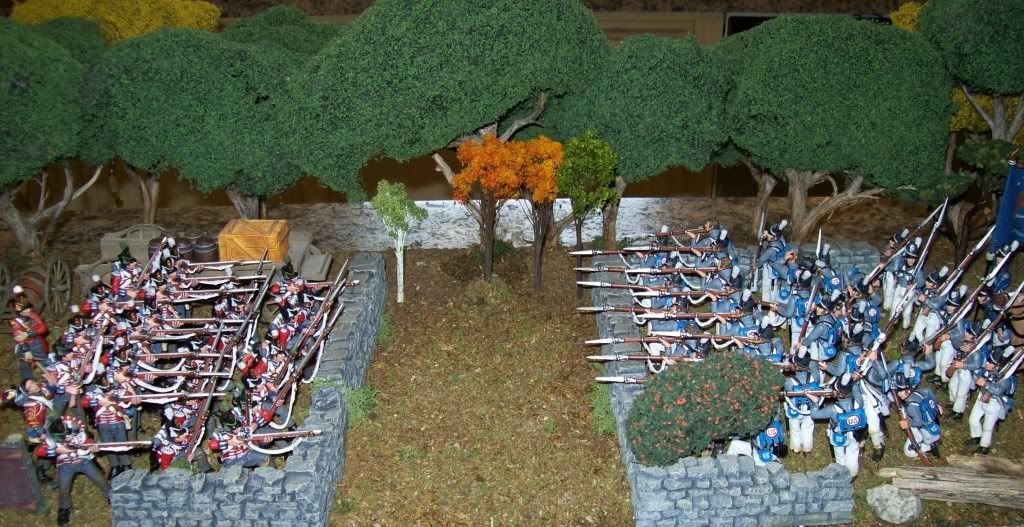


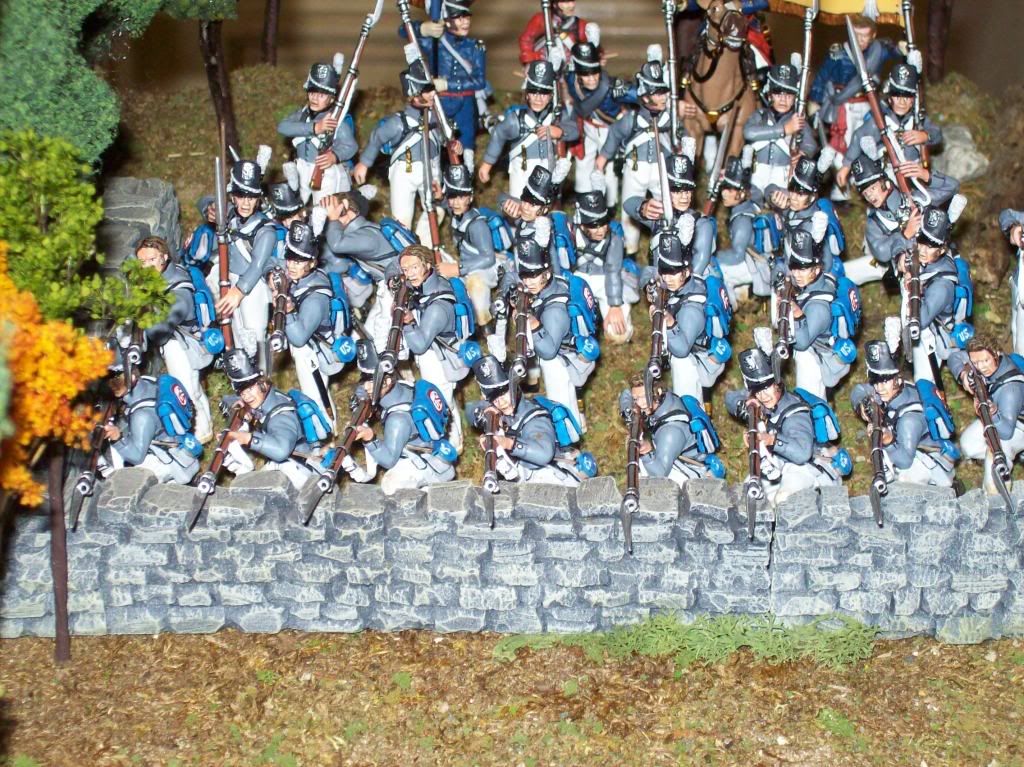
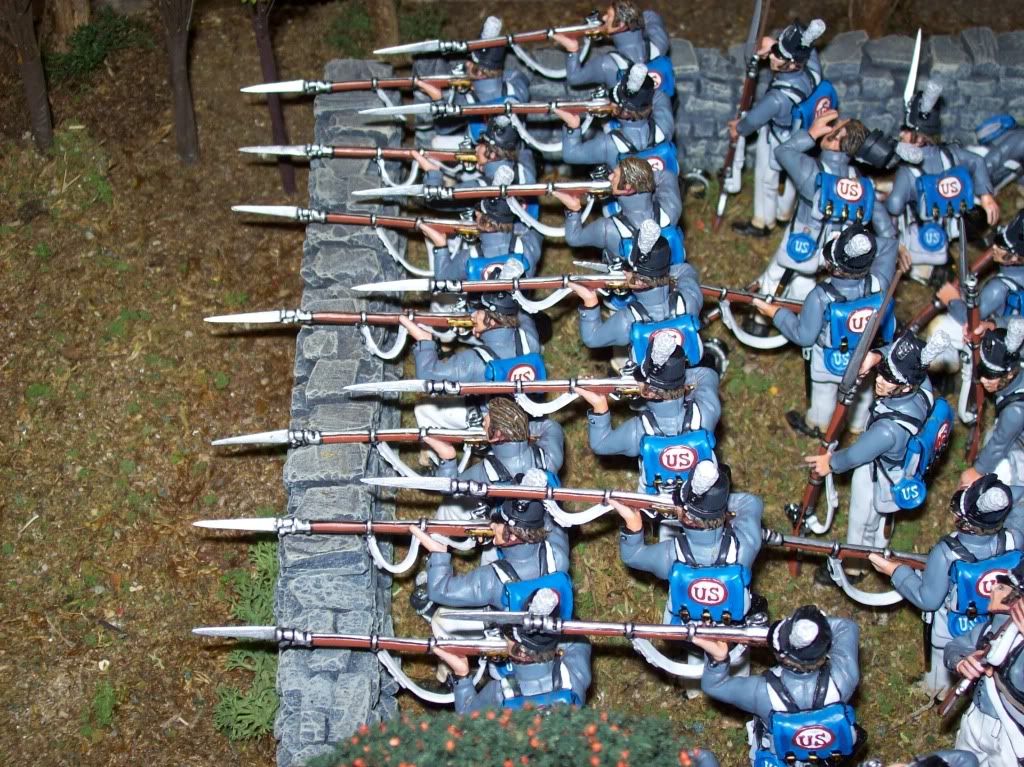


The reported utterance of this phrase...was by an astonished Major General Phineas Riall.
Spoken as he realized his major tactical blunder, by assuming the American soldiers he now exchanged fire with (dressed in the drab "gray" coats), were instead those of the undisciplined and untrained levies, believing they would break and run after exchanging volleys with the disciplined British armies, they didn't.
Raill was astonished to find the new American army, led by Brigadier General Winfield Scott, adhering strongly to the rules of European-style warfare and not panicking and fleeing as before .
The armies are separated by only 100 meters and firing volleys into each other, but Scott's men did not yield.
Their devastating fire cost the British many officers, causing a confusion of command among in forward lines.
The Battle of Chippawa (sometimes incorrectly spelled Chippewa) was a victory for the United States Army in the War of 1812, during an invasion of Upper Canada along the Niagara River on July 5, 1814.
It is generally considered that Major General Phineas Riall, although misled as to the strength of the American forces and their quality, advanced overconfidently, and his mistaken tactics led to the heavy British casualties.
Some believe that the Corps of Cadets of the United States Military Academy at West Point wear the gray parade uniforms adopted in commemoration of Scott’s troops at Chippawa.
In early 1814, it was clear that Napoleon would soon be defeated in Europe, and seasoned British veteran soldiers from the Peninsular War would be redeployed to Canada.
The United States Secretary of War, John Armstrong, was eager to win a victory in Canada before British reinforcements arrived there.
Major General Jacob Brown was ordered to form the Left Division of the Army of the North.
Armstrong intended him to mount an attack on Kingston, the main British base on Lake Ontario, with a diversion by militia across the Niagara River to distract the British.
He had however drawn up alternate orders for a major attack across the Niagara, possibly as a contingency plan, but probably to mislead the British through deliberate leaks.
Brown considered he was being presented with two alternate plans, and was free to choose between them.
Although Brigadier General Edmund P. Gaines tried to persuade Brown to make the attack on Kingston, it proved impossible for Brown to gain any cooperation from Commodore Isaac Chauncey (commanding the American naval squadron based at Sackett's Harbor, New York) which was essential for any such attack.
Chauncey was waiting for new ships to be completed and refused to make any move before the middle of July. Brown therefore made the attack across the Niagara into the main effort.
Stationed at Buffalo, New York, near the head of the Niagara River, was Brigadier General Winfield Scott.
At Buffalo, Scott instituted a major training program .
He drilled his troops for ten hours every day, using the 1791 Manual of the French Revolutionary Army. (Prior to this, various American regiments had been using a variety of different manuals, making it difficult to maneuver any large American force).
Scott also purged his units of any remaining inefficient officers who had gained their appointments through political influence rather than experience or merit.
He insisted on proper camp discipline including sanitary arrangements.
This reduced the wastage from dysentery and other enteric diseases which had been heavy in previous campaigns.
He was thwarted in only one matter: he could not find enough blue uniforms for his men.
They had been shipped in plenty of time for once but had been diverted to Plattsburgh and Sackets Harbor, although enough were found from one source or another to clothe the 21st US Infantry.
Eventually Commissary General Callender Irvine had to have 2,000 uniforms hastily run up and sent to Buffalo, but there being insufficient blue cloth, short gray jackets were substituted.










